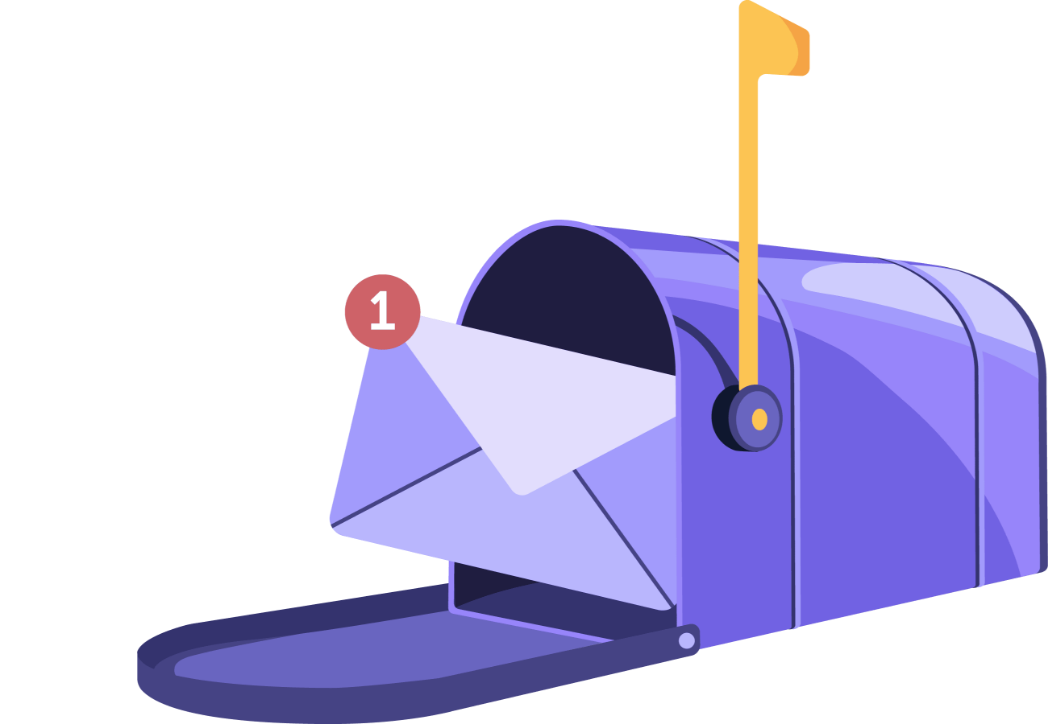Keeping buyers hooked from first click to final contract
If your B2B customer buying journey were a first date, would there be a second one? Or would your prospect ghost you before the check even arrives?
The problem is, most B2B journeys are awkward, confusing, and full of dead ends. Buyers start strong, clicking around your site, but somewhere between the endless product pages, missing pricing, and slow response times, they disappear.
B2B buyers aren’t impulsive. They’re skeptics. They’re researching, comparing, and debating their options with a committee. If your journey isn’t smooth, intuitive, and actually helpful, you’ll lose them before they even consider commitment.
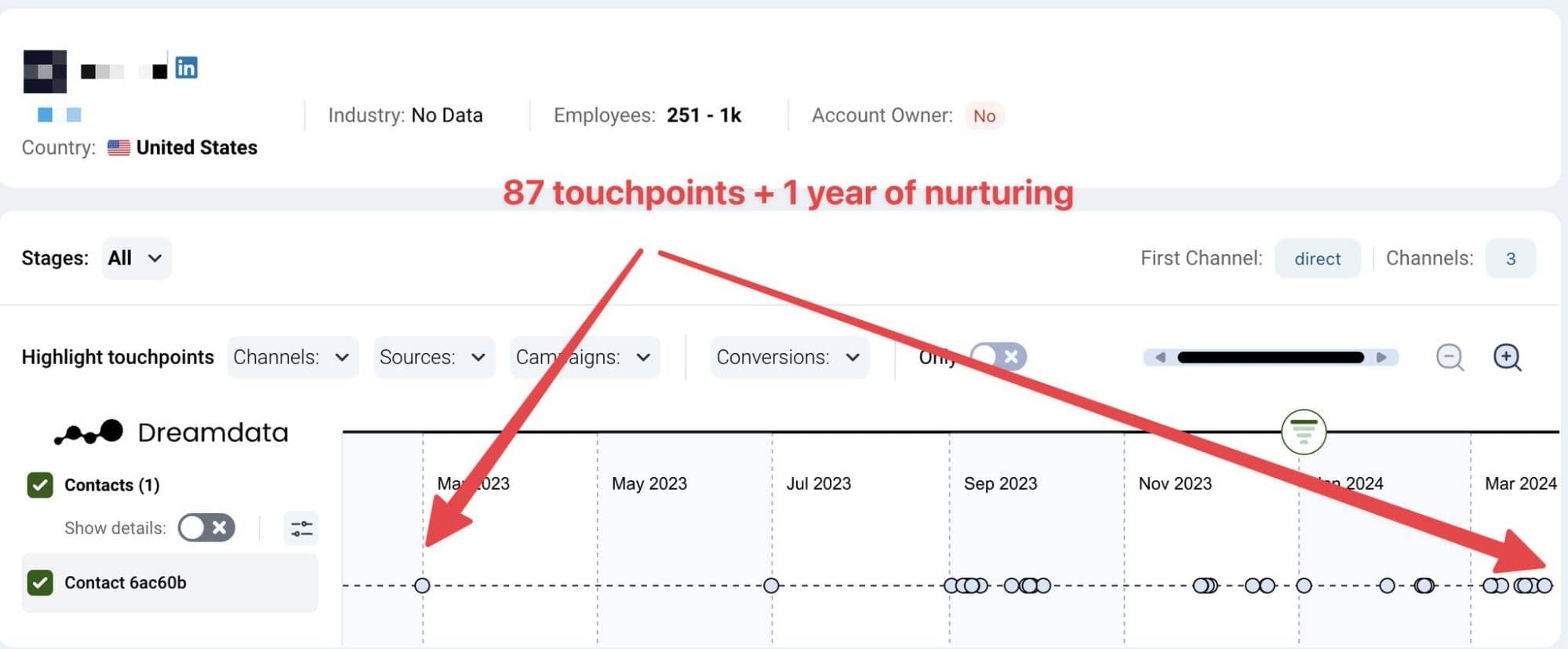
Image by Andrei Zinkevich of Fullfunnel.io (source: LinkedIn)
So, how do you keep them engaged? How do you turn interest into action? Let’s break the B2B customer journey down step by step.
The B2B customer journey stages
The B2B customer journey isn’t a quick sprint; it’s a marathon with a few obstacle courses thrown in for good measure. Buyers aren’t impulse-clicking “Add to Cart”. They’re weighing options, looping in stakeholders, and meticulously vetting solutions.
Your job? Make that process as smooth (and convincing) as possible.
Here’s what that journey looks like—and where you need to show up.
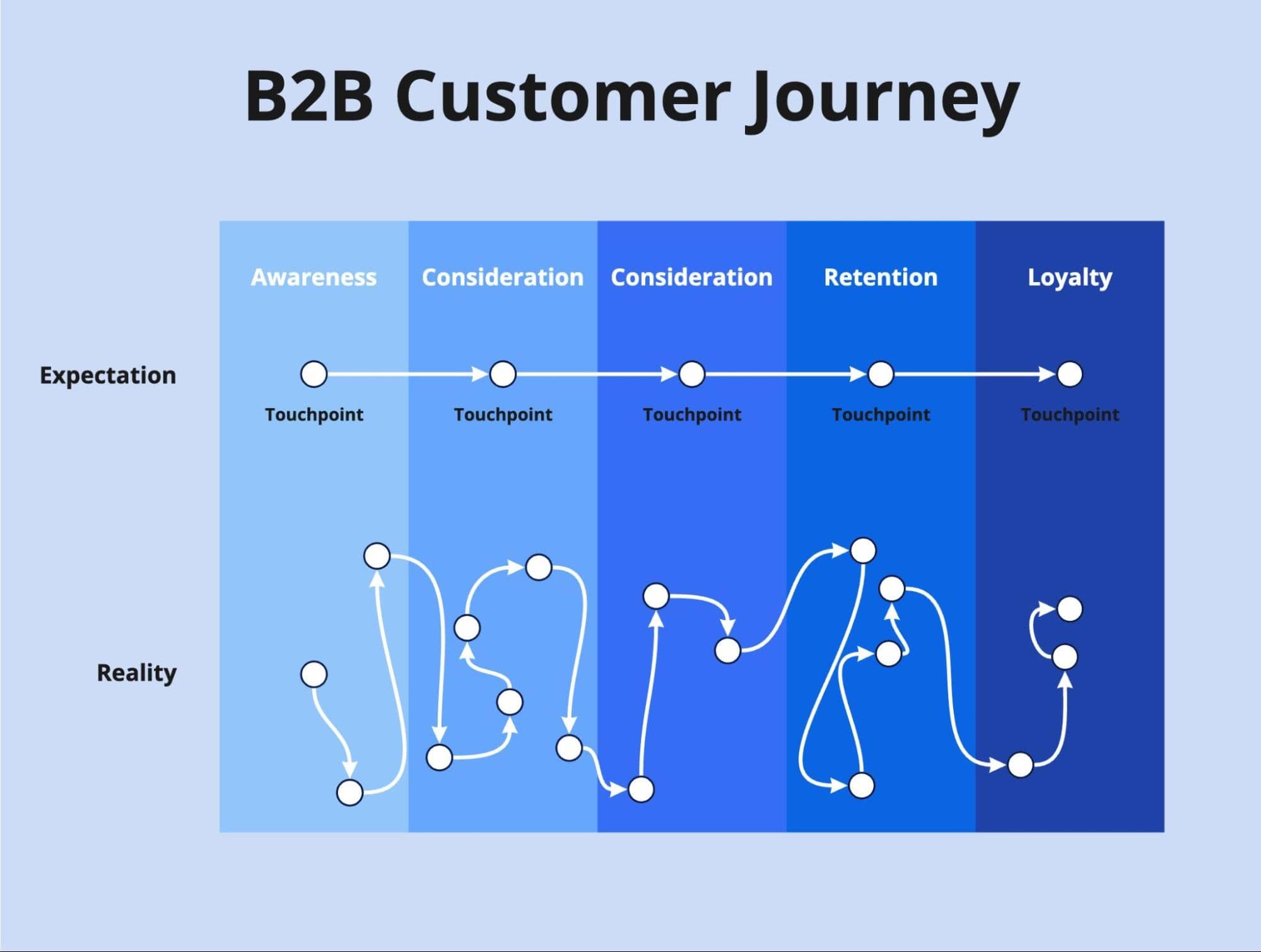
Awareness
This is where potential customers first realize they have an issue that needs solving—and start searching for answers. Maybe their current software is clunky, their processes are outdated, or they just saw a LinkedIn post that made them rethink their entire strategy.
Your move? Be the answer before they even know the question.
Smart brands dominate this stage with SEO-driven content, insightful blog posts, whitepapers, and case studies that subtly position their product as the go-to solution.
Consideration
Now, they know what they need. They’re comparing, researching, and making lists of potential solutions. This is the “pros and cons spreadsheet” phase, where buyers scour reviews, watch demos, and grill sales reps on pricing and features.
Guess what? 41% of B2B buyers say user reviews are their #1 research tool. So, what do you do with this?
Build trust. Provide transparent product comparisons, showcase customer testimonials, and offer live demos or free trials. If you’re not giving them the insights they need, they’ll go find them elsewhere
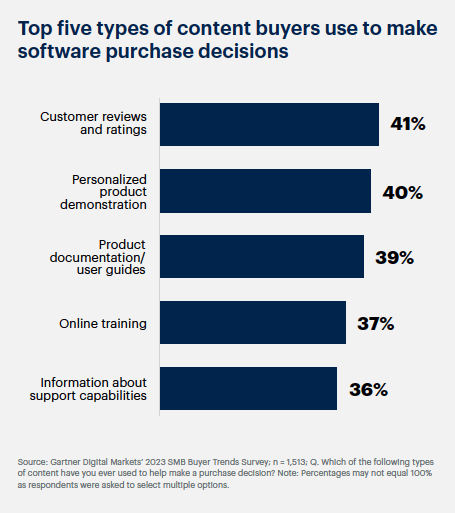
Image from Gartner.com
Conversion
They’ve done their homework. They’re ~mostly~ sold. Now, they just need to click “Buy” (or more realistically, loop in their CFO for approval).
But here’s where many B2B brands lose the sale.
Hidden pricing? Friction-heavy checkout? Slow response times? Kiss that deal goodbye. The best brands make conversion frictionless by offering:
- Transparent pricing (no “Request a Quote” black hole)
- Flexible payment options
- A smooth, intuitive checkout process
Make it too easy for them to say yes.
Retention
Winning a customer is hard. Keeping them? Even harder. The post-purchase experience is where you either build loyalty—or send them looking for a better option.
Retention must-haves:
- Flawless onboarding: Guide them from day one with hands-on support, tutorials, and check-ins.
- Personalized recommendations: Use behavioral data to suggest features, upgrades, or add-ons that actually make sense.
Proactive customer support: Reach out before they run into problems.
A solid retention strategy doesn’t just keep customers—it turns them into fans.
Loyalty/Advocacy
The best B2B brands have customers who are also evangelists. The ones who rave about your product on LinkedIn, refer others, and wouldn’t dream of switching to a competitor.
Want to build that kind of loyalty?
- Reward long-term users with exclusive perks, discounts, and insider updates.
- Feature success stories and case studies to showcase real-world wins.
- Keep innovating, because loyal customers stay where the value keeps growing.
5 steps to power up your B2B customer journey
Now that we’ve mapped out the twists and turns of the B2B customer journey, let’s talk about how to make it better. Because if there’s one thing B2B buyers hate, it’s a clunky, frustrating experience.
Here’s how to smooth out the friction, optimize every touchpoint, and turn more “maybes” into “absolutelys.”
1. Create a B2B customer journey map
If you don’t understand your customers’ journey, how can you improve it?
Spoiler: you can’t.
B2B customer journey mapping involves laying out every interaction a prospect has with your brand, from the first click to the final contract (and beyond). It’s a bit like Google Maps for your sales funnel: a bird’s-eye view of what’s working, what’s broken, and where you’re losing people.
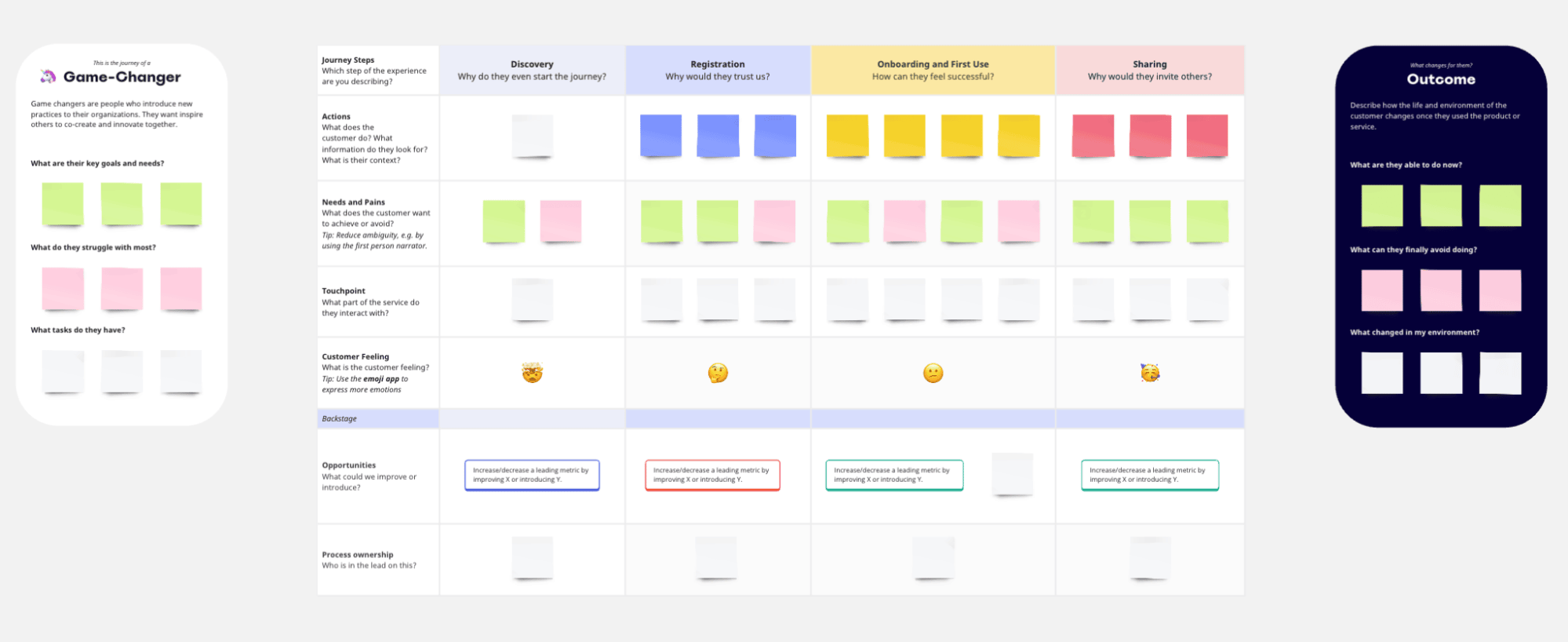
A Miro template for customer journey mapping
When you know exactly how customers move through your funnel, you can:
- Spot roadblocks (e.g., a confusing pricing page, slow response times)
- Identify high-impact touchpoints (e.g., case studies that drive conversions)
- Personalize the experience (so buyers feel like you “get” them)
How to create a B2B customer journey map
To make this process easier, use tools like Miro (our go-to at Mouseflow), Lucidchart, or Figma to visually map out the journey. A strong B2B journey map should include:
- Buyer personas: Who’s actually making the decisions?
- Key journey stages: Awareness, consideration, decision, retention, and advocacy.
- Customer actions: What they’re doing at each stage (browsing, comparing, leaving, etc.).
- Pain points & needs: What’s frustrating them? What are they looking for?
- Touchpoints: Where and how they interact with your brand (website, email, LinkedIn, etc.).
- Emotions & objections: What they’re thinking and feeling throughout the process.
- Solutions: How your product or service solves their problems.
Once you have this mapped out, it’s a lot easier to see where your journey is failing—and where you need to step up your game.
2. Personalize customers’ journeys
The last thing B2B buyers want to feel like is just another name on a lead list. They expect solutions that actually fit their needs, not a catch-all sales pitch that could apply to anyone. And here’s the kicker—86% of customers are more likely to buy from companies that “get” them. If your approach still screams “Dear Valued Customer,” you’re already losing deals.
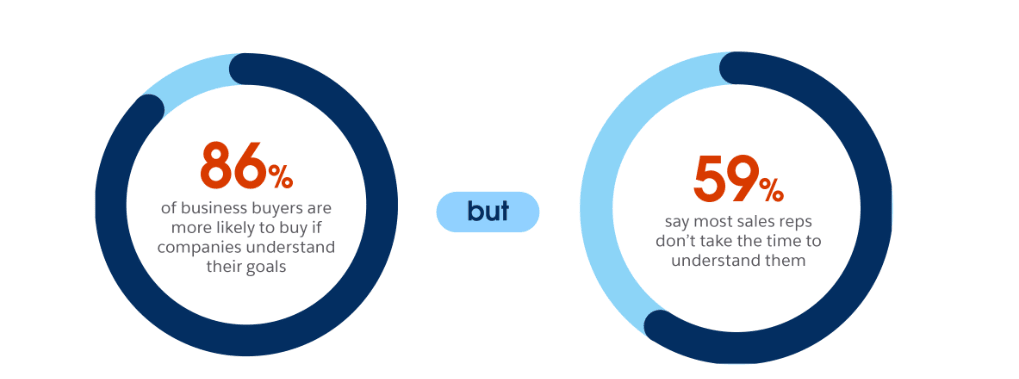
Source: facebook.com (by Seattle Web Design)
The fix? Use your data wisely. Dig into your customer journey map and create a SaaS marketing plan. Where do prospects drop off? What content keeps them engaged? Instead of guessing, let their behavior guide your strategy. Stop blasting the same emails to everyone—segment by industry, role, or buying stage so that the CFO and the Head of Marketing get messaging that actually speaks to their priorities.
Beyond making a stellar first impression, personalization means keeping buyers engaged long enough to convert—and keeping them happy once they do.
- If a lead keeps circling a certain feature page but won’t commit, send them a case study proving it works.
- If an existing customer regularly uses a specific service, recommend an add-on that benefits them.
- And if someone has stuck with you for years, treat them like it, whether that’s early access to new features, exclusive perks, or a thank-you that doesn’t feel like an afterthought.
Rather than being impulsive, B2B buying is calculated, cautious, and usually involves way too many decision-makers. But if you can make buyers feel like you understand them—and that choosing you is the smart move—you’ll turn interest into action, and customers into long-term champions.
3. Streamline website experiences
Your website is undoubtedly the most important sales tool in your B2B buyer journey. If visitors can’t find what they need, get lost in a maze of menus, or struggle to check out, they’ll leave. Fast. And they won’t come back.
Want to keep them moving toward a sale? Make every step effortless.
Here are the main things to focus on:
- Fix the friction in your checkout process: B2B buyers don’t have time for unnecessary steps. 26% of customers abandon their carts because they’re forced to create an account. Another 22% bail on a complicated checkout process. Keep it simple. Offer guest checkout, auto-fill forms, and multiple payment options so buyers can seal the deal without jumping through hoops. (Pssst, read more about improving the checkout experience .)
- Make navigation stupidly simple: Nobody should need a map to find key pages. Your site should be ridiculously easy to navigate: clear menus, intuitive categories, internal links, and a functional search bar are just some of the components of a model website layout. If buyers have to hunt for what they need, they won’t bother. They’ll just leave.
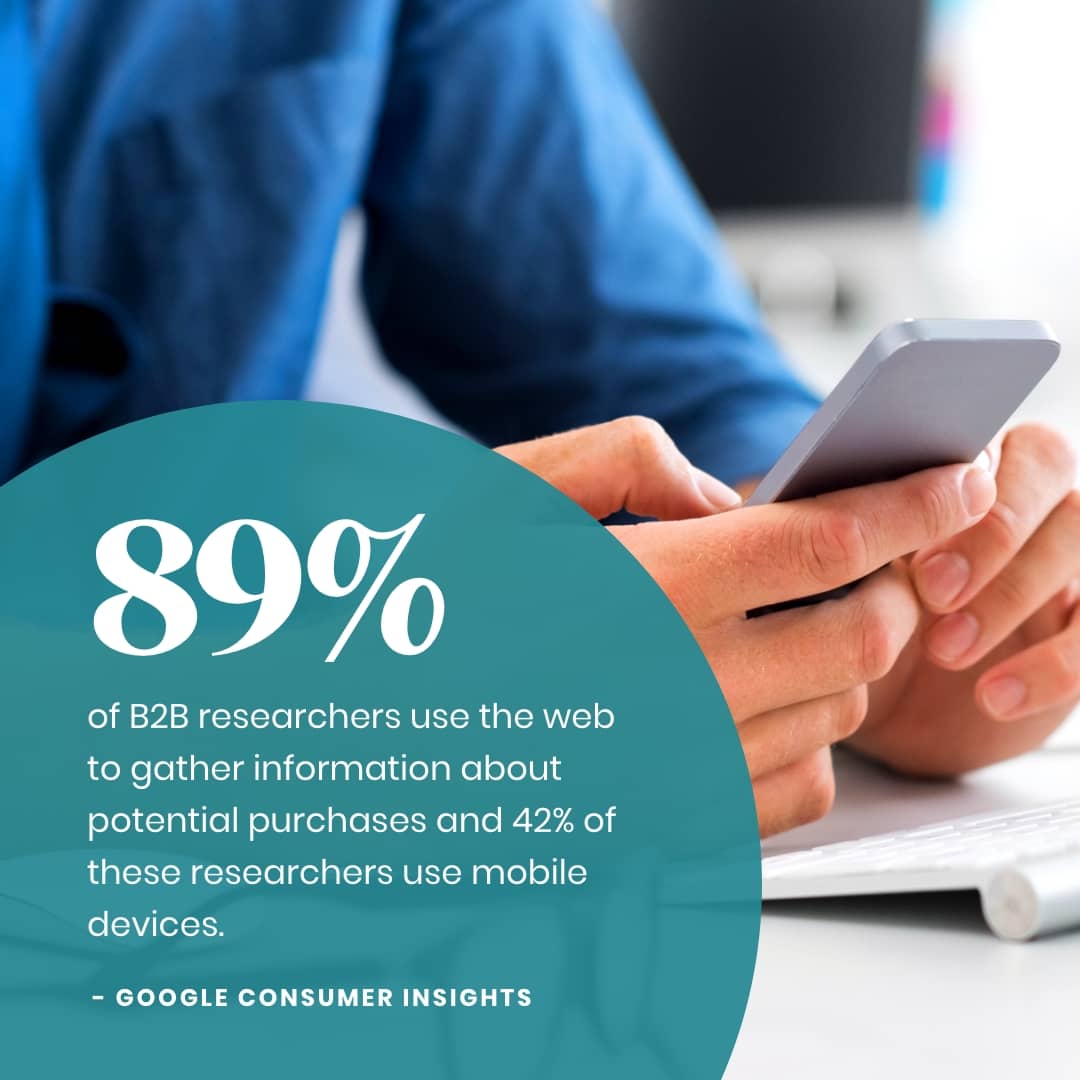
- Make it mobile-friendly or forget about it: No, B2B buyers probably aren’t making five-figure purchases from their phones. But they are researching on the go—checking reviews, comparing solutions, and browsing your content. If your site loads like it’s stuck in 2008 or breaks on mobile, you’re making a terrible first impression.
- Keep your info fresh: Nothing kills trust faster than outdated content. If a buyer finally lands on your pricing page and sees old numbers, vague descriptions, or missing stock info, they’re gone. Every key page should be accurate, up to date, and crystal clear.
- Find out why visitors are leaving: High bounce rates? Users stalling on key pages? That’s a red flag. Maybe your page doesn’t match search intent. Maybe the content is vague. Maybe the page is broken. Mouseflow’s Conversion Funnel Optimization Tool helps track where and why users drop off, so you can fix the leaks before they cost you more business.
Put simply, a clean, intuitive website keeps customers moving toward a purchase. Remove the roadblocks, and you’ll turn more clicks into contracts.
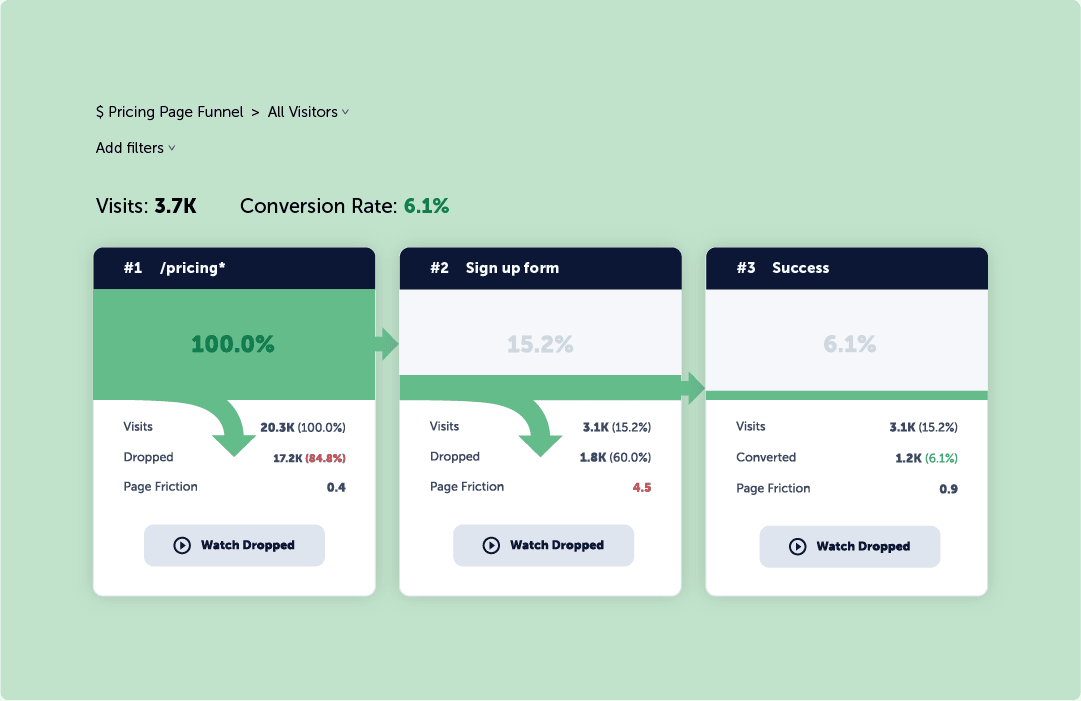
Mouseflow conversion funnel example
4. Use the right tech to keep B2B buyers engaged
B2B buyers expect efficiency. If they’re stuck waiting for responses, wrestling with clunky workflows, or navigating a website that doesn’t work the way they need it to, they’re already looking at your competitors. Technology that works is the difference between a frictionless, high-converting journey and one that sends prospects running.
Smart automation and AI make the buying process easier, faster, and more intuitive. The trick? Using tech where it actually makes people’s lives easier, rather than just adding more complexity. This is especially important for SaaS enterprise offerings.
- Chatbots: Most B2B buyers prefer to self-serve their way through early research. In fact, almost 100% of them do. They don’t want to wait for a sales rep to answer basic questions—especially when they’re comparing vendors. A well-placed chatbot speeds up that process, giving them the information they need right now, be it product specs, demo requests, or pricing details. That said, chatbots have limits. If a prospect is asking something nuanced, they should be handed off to a real person—fast. No one wants to argue with a bot when they’re almost ready to make a decision.
- Predictive analytics: Most of the time, customers leave clues before they buy—or before they bail. They visit key pages, engage with certain content, or stop responding altogether. Predictive analytics tools track those patterns and help you spot high-intent buyers before they take the next step. Instead of chasing cold leads, you can focus on the right people at the right time. It works the other way too. If a long-time customer’s activity drops off, that’s a red flag. The sooner you know, the sooner you can step in with personalized outreach, rather than waiting for them to disappear entirely.
- Customer experience platforms: Without a system to track what’s happening across marketing, sales, and customer success, you’re just guessing. CRMs and customer experience platforms pull everything together so you’re not flying blind. The moment a lead interacts with your brand, their history is logged—no more disjointed follow-ups or missing context. Think about what that means for a buyer. They don’t have to repeat themselves every time they reach out. They don’t get stuck in an endless loop of “We’ll get back to you.” They actually feel like your company is paying attention.
- User behavior analytics: Not all website issues are obvious. Sometimes buyers aren’t converting because a CTA is buried, a form is confusing, or a key page just isn’t answering their questions. Instead of guessing, behavior analytics tools show you what’s happening in real time. You can see where users hesitate, where they click, and where they give up altogether. Heatmaps, session replays, and friction scores expose hidden problems, so you can fix them before they cost you another sale.
The best B2B journeys run like a well-oiled machine. When automation, AI, and data tools are used well, they speed things up while simultaneously removing the roadblocks that make buyers second-guess their decision. The less friction they experience, the faster they move toward a yes.
5. Provide continuous post-purchase support
B2B brands spend so much time chasing new customers that they forget about the ones they already have. Big mistake. Customer acquisition is expensive, and keeping buyers happy post-purchase isn’t just good service—it’s the easiest way to drive renewals, referrals, and long-term growth.
Retention doesn’t happen by accident. It happens when you make customers feel supported from day one.
Make onboarding so good they never look for alternatives
The moment a customer buys, the clock starts ticking. If they can’t figure out how to use your product—or worse, they feel ignored—they’ll be looking for an exit before they even get started. A strong onboarding process prevents that.
The basics? A welcome email that actually adds value, not just a receipt. Clear, easy-to-follow setup guides and video tutorials. A dedicated support contact or proactive outreach if they haven’t logged in or activated key features. Don’t wait for them to get frustrated—get ahead of potential roadblocks before they become dealbreakers.
Check in before they check out
Customer satisfaction surveys can be viewed as a cheat code for retention. If buyers are struggling with your product or service, you want to hear about it before they cancel or churn.
Regularly asking for feedback—whether it’s a quick Net Promoter Score (NPS) check-in or a more detailed Customer Satisfaction (CSAT) survey—helps you spot issues early. And don’t just collect responses—act on them. If multiple customers mention the same frustration, that’s a red flag. Fix it before it costs you more business.
(For reference, our own CSAT score is 98% this year—a direct result of listening to what our customers actually need.)
Be there when they need you (not just when you need them)
Nothing kills loyalty faster than bad support. A missing feature, a billing issue, a technical glitch—these things happen. The difference between keeping or losing a customer? How fast and effectively you deal with it.
Make your support system easy to access and actually useful. Self-service knowledge bases, live chat, dedicated account managers—whatever makes sense for your customers, have it in place. And if something goes wrong? Own it. Fix it. Follow up. A well-handled problem can build trust just as much as a flawless experience.
Long-term growth comes from long-term relationships
A customer journey that ends at purchase is a short-sighted one. The real goal is to turn buyers into long-term advocates—the kind who stick around, spend more, and most importantly for growth, bring others with them. The best way to do that? Make them feel supported and valued every step of the way.
B2B customer journey touchpoints
Every interaction a buyer has with your brand—whether it’s a website visit, a LinkedIn post, or a conversation with sales—is a touchpoint. These moments shape perceptions, influence decisions, and ultimately determine whether a prospect moves forward or walks away.
In B2B, sales cycles are long and complex. Buyers don’t just browse and buy—they research, compare, and consult multiple stakeholders before committing. Along the way, they engage with brands across dozens of channels. If your messaging is inconsistent, your website frustrating, or your sales process slow (to name the most common pitfalls), you’ll lose them before they ever reach a decision.
So, are you showing up where buyers need you? Are your touchpoints helping them move forward—or making them second-guess?
Now, let’s revisit some of the customer journey stages and examine the key touchpoints that make or break each one.
Awareness
The B2B journey starts with a problem—one your potential customers are actively trying to solve. They’re researching, searching, and scanning for credible solutions. This is where first impressions are made, and if your brand isn’t visible (or worse, looks outdated or irrelevant), you’re out before the game even begins.
Key touchpoints:
- Website homepage & blog content
- SEO & paid search
- Social media (LinkedIn, Twitter)
- Industry events & webinars
What you need to do:
Your brand must have a presence where your buyers are looking. Optimize for SEO so your content ranks when they search for answers. Use blog posts, whitepapers, and case studies to position yourself as a trusted authority. Keep your social channels active and insightful (nobody engages with brands that only post sales pitches). If you’re at industry events, don’t be a wallflower—speak, engage, and make connections that count.
Consideration
At this point, buyers know what kind of solution they need—but they’re weighing their options. They’re reading reviews, comparing features, and evaluating which provider fits their needs best. Every detail counts. If your messaging lacks clarity, your competitors will win the deal.
Key touchpoints:
- Product pages & pricing information
- Reviews & testimonials
- Comparison sites & analyst reports
- Email nurture sequences
What you need to do:
Make research easy. Your product pages must be clear, detailed, and transparent about pricing—nobody wants to dig for basic information. Showcase customer reviews, testimonials, and case studies to provide social proof. If your competitors are on comparison sites, so should you. Meanwhile, a well-crafted email nurture sequence can guide prospects with valuable content instead of relentless sales pitches. Every interaction here should reinforce one thing: choosing your solution is the smartest move they can make.
Decision
The buyer is almost there. They’ve done the research, narrowed their options, and now it’s decision time. But hesitation is natural—pricing concerns, internal approvals, and last-minute doubts can stall or derail the process. Your job? Remove every last bit of friction.
Key touchpoints:
- Sales calls & demos
- Proposals & contract negotiations
- Checkout & onboarding
What you need to do:
Don’t assume buyers will chase you—follow up fast and be proactive. Sales calls and demos should feel tailored, not like a script you’ve read 100 times. Be upfront about pricing and terms—hidden fees or vague contracts create distrust. If your purchase process is clunky, fix it. A seamless checkout and smooth onboarding experience can be the difference between a signed contract and a lost deal. Make saying yes the easiest part of their journey.
Post-purchase
Winning a customer is one thing; keeping them is another. B2B relationships don’t end at the sale. They evolve. Buyers need to feel supported, valued, and continually reassured that they made the right choice. If they don’t? Don’t count on them renewing.
Key touchpoints:
- Onboarding & training
- Customer support & troubleshooting
- Ongoing engagement (newsletters, webinars)
- Renewal & upsell opportunities
What you need to do:
Far from being a one-time email, onboarding is the foundation of long-term retention. Offer training materials, live walkthroughs, and check-ins to ensure customers fully understand your product. Make support accessible—whether it’s chat, email, or a dedicated account manager, customers shouldn’t have to struggle to get help. Stay engaged through valuable content and exclusive updates, not just upsell attempts. And when renewal time comes? You shouldn’t have to “resell” your product. A great experience throughout the journey makes that decision a no-brainer.
The bottom line of B2B customer touchpoints? Remember that every interaction either pulls buyers closer or pushes them away—there’s no neutral ground. Smooth out the bumps, meet them where they are, and make choosing you feel like the obvious next step.

What We Do To Make Customers Happy
In addition to customer support, Mouseflow has a customer success team that makes sure our customers can make the most out of our product. They provide personalized onboarding and check in with customers to ensure they are able to use Mouseflow the way they want.
We also offer custom development for teams on Business and Enterprise plans to make sure Mouseflow as a product fits their needs as they evolve and change.
Final takeaways
The B2B buying process rarely follows a linear pattern—it’s a series of choices, hesitations, and “let’s circle back next quarter” delays. Every touchpoint, every piece of content, and every interaction either moves buyers forward or leaves them stuck in limbo. The brands that win don’t just wait for leads to convert—they actively shape a seamless, intuitive B2B customer journey that makes every next step feel natural.
Want to see where your customer journey is helping—or hurting—your conversions? Use Mouseflow to track real user behavior, identify friction points, and optimize every interaction. Start your free trial today and make every touchpoint work harder.


